

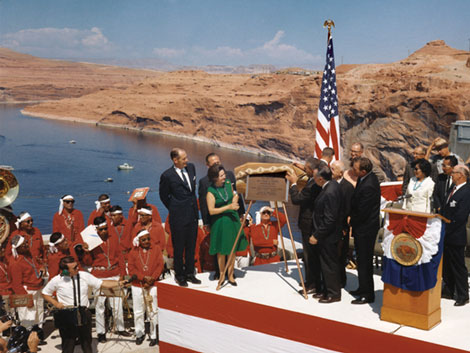 First Lady, Mrs. Lyndon B. Johnson, dedicates Glen Canyon Dam – 1966. Reclamation photo.
First Lady, Mrs. Lyndon B. Johnson, dedicates Glen Canyon Dam – 1966. Reclamation photo.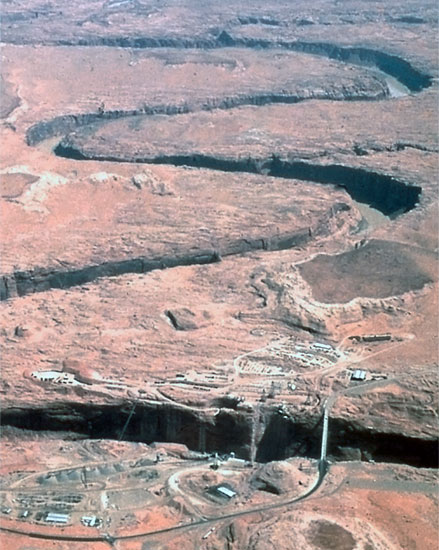 View of the Colorado River and the Glen Canyon Dam site – 1961. Reclamation photo.
View of the Colorado River and the Glen Canyon Dam site – 1961. Reclamation photo.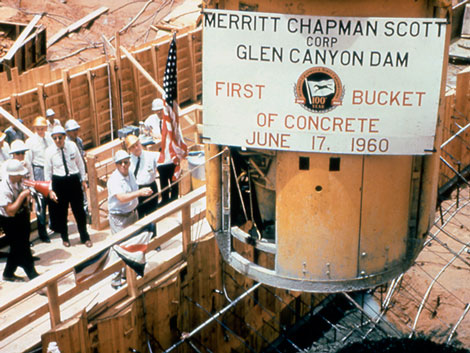 First bucket of concrete was poured at Glen Canyon Damon June 17, 1960, the 58th anniversary of the signing of the Reclamation Act of 1902. Reclamation photo.
First bucket of concrete was poured at Glen Canyon Damon June 17, 1960, the 58th anniversary of the signing of the Reclamation Act of 1902. Reclamation photo.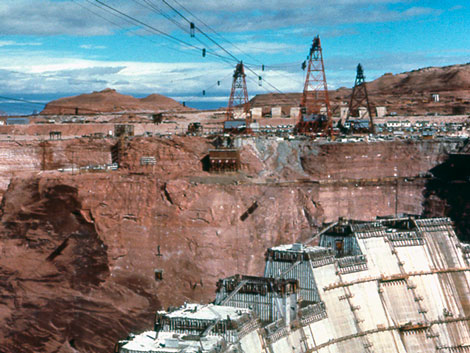 View of construction cableways at Glen Canyon Dam, 1963. Reclamation photo.
View of construction cableways at Glen Canyon Dam, 1963. Reclamation photo.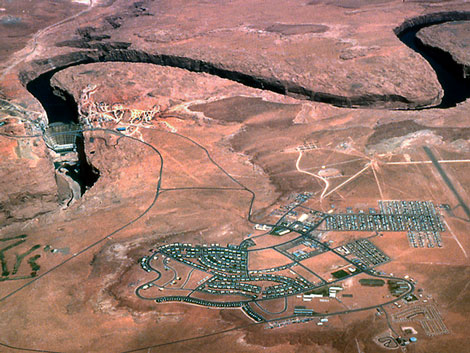 Aerial view of Page, Arizona – 1963. Reclamation photo.
Aerial view of Page, Arizona – 1963. Reclamation photo.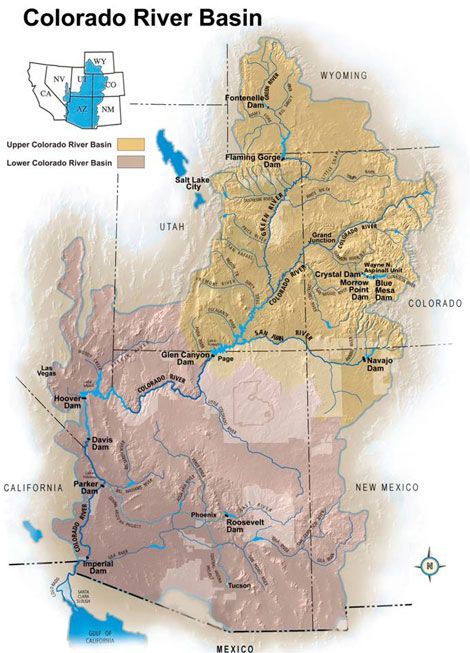 The Colorado River Basin States, Bureau of Reclamation
The Colorado River Basin States, Bureau of Reclamation 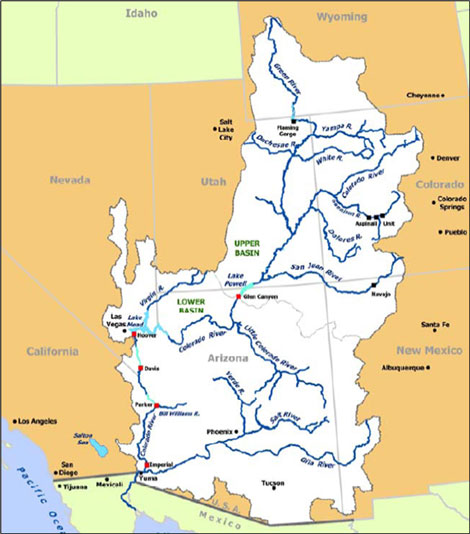 The Colorado River Basin States, Bureau of Reclamation
The Colorado River Basin States, Bureau of Reclamation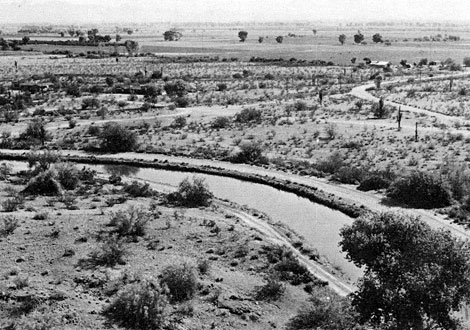 The Salt River Project's Cross Cut Canal in southwestern Scottsdale, Arizona in 1947. The landscape is primarily open desert, undeveloped, with irrigated farmland visible in the distance. Reclamation ERA photo.
The Salt River Project's Cross Cut Canal in southwestern Scottsdale, Arizona in 1947. The landscape is primarily open desert, undeveloped, with irrigated farmland visible in the distance. Reclamation ERA photo.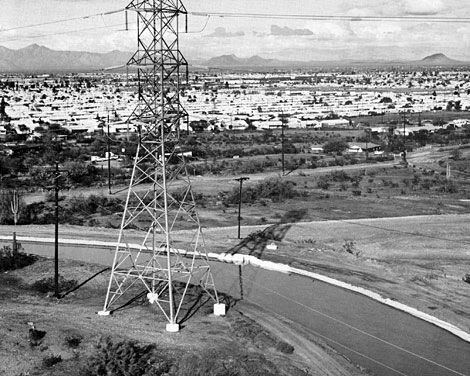 The same view of the Cross Cut Canal in 1968, showing the obvious and major encroachment of development. The increasing population portends the switch in primary water uses from agriculture to municipal and industrial use which was to come by the end of the 20th century. Reclamation ERA photo.
The same view of the Cross Cut Canal in 1968, showing the obvious and major encroachment of development. The increasing population portends the switch in primary water uses from agriculture to municipal and industrial use which was to come by the end of the 20th century. Reclamation ERA photo.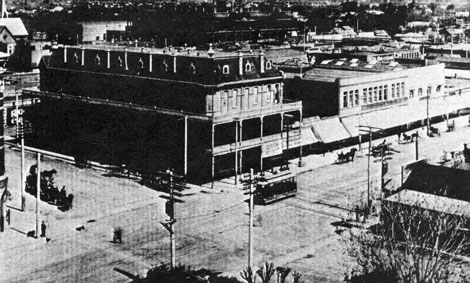 Phoenix, Arizona, from the corner of First Avenue and Washington Street, looking northeast, 1907. Reclamation ERA photo.
Phoenix, Arizona, from the corner of First Avenue and Washington Street, looking northeast, 1907. Reclamation ERA photo.
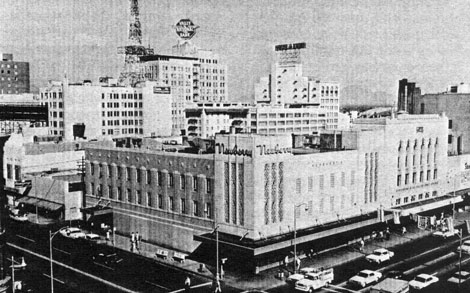 Same view, 1963. Phoenix has grown to one-half million in population. Phoenix, Arizona is in the center of Reclamation's Salt River Project. Reclamation ERA photo.
Same view, 1963. Phoenix has grown to one-half million in population. Phoenix, Arizona is in the center of Reclamation's Salt River Project. Reclamation ERA photo.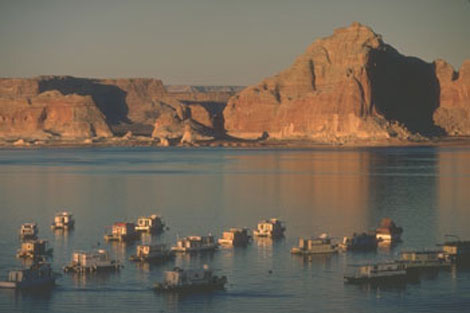 Houseboats on Lake Powell, the reservoir created by Glen Canyon Dam. In the 1960s, recreation became an authorized component of Reclamation projects. Reclamation ERA photo.
Houseboats on Lake Powell, the reservoir created by Glen Canyon Dam. In the 1960s, recreation became an authorized component of Reclamation projects. Reclamation ERA photo.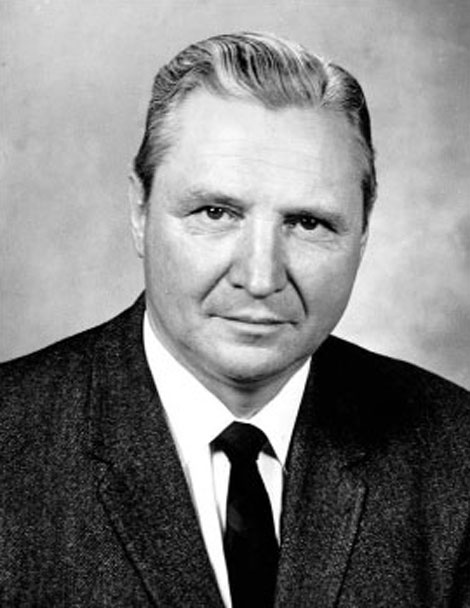 Floyd Dominy, Commissioner Of Reclamation, 1959-1969. Reclamation photograph.
Floyd Dominy, Commissioner Of Reclamation, 1959-1969. Reclamation photograph. 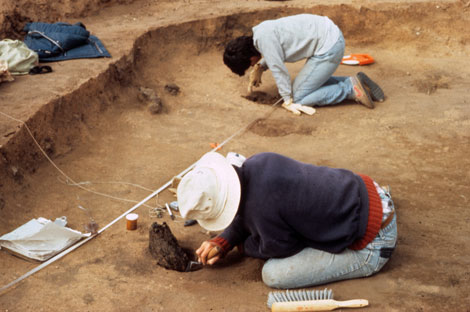 Reclamation archaeologists identified and excavated all significant prehistoric and historic sites prior to construction of the Central Arizona Project. Reclamation photograph.
Reclamation archaeologists identified and excavated all significant prehistoric and historic sites prior to construction of the Central Arizona Project. Reclamation photograph.
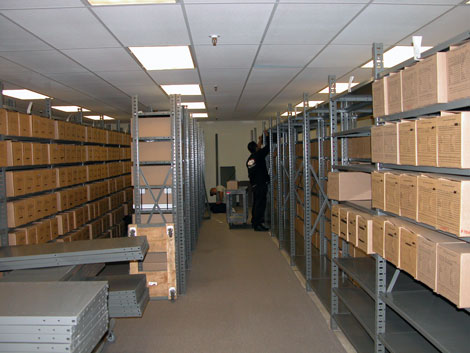 The CAP Collection. Reclamation is responsible for ensuring all federally owned cultural properties are protected and preserved. Reclamation Photograph.
The CAP Collection. Reclamation is responsible for ensuring all federally owned cultural properties are protected and preserved. Reclamation Photograph.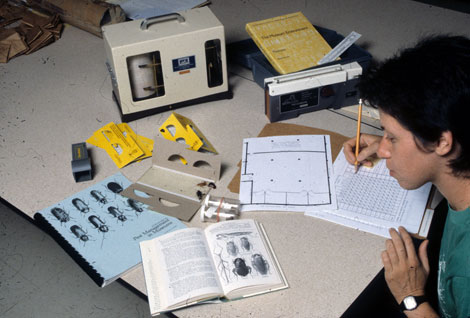 Once significant data was recovered, Reclamation archaeologists ensured that it was collected, categorized, and published. Reclamation Photograph.
Once significant data was recovered, Reclamation archaeologists ensured that it was collected, categorized, and published. Reclamation Photograph.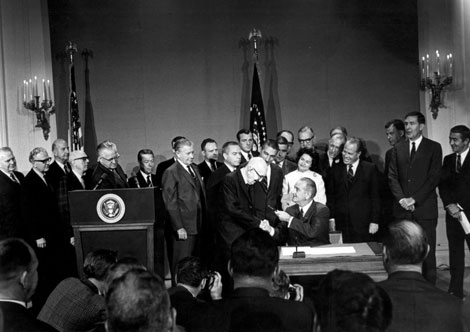 The Central Arizona Project was authorized on September 30, 1968, as part of the Colorado River Basin Project Act, Public Law 90-537 (82 Stat. 885). While "Title V– Upper Colorado River Basin: Authorization and Reimbursements," provided for construction of Animas-La Plata, Dolores, Dallas Creek, West Divide, San Miguel, and Central Utah (Unitah Unit) Projects, CRBP was largely legislation that actualized the long pursued dream of diverting Colorado River water to central Arizona. In this photo, President Lyndon Johnson signs the legislation, handing a pen to Senator Carl T. Hayden, who had been influential in getting the legislation passed. Reclamation Photograph.
The Central Arizona Project was authorized on September 30, 1968, as part of the Colorado River Basin Project Act, Public Law 90-537 (82 Stat. 885). While "Title V– Upper Colorado River Basin: Authorization and Reimbursements," provided for construction of Animas-La Plata, Dolores, Dallas Creek, West Divide, San Miguel, and Central Utah (Unitah Unit) Projects, CRBP was largely legislation that actualized the long pursued dream of diverting Colorado River water to central Arizona. In this photo, President Lyndon Johnson signs the legislation, handing a pen to Senator Carl T. Hayden, who had been influential in getting the legislation passed. Reclamation Photograph.For more information on Senator Hayden: http://bioguide.congress.gov/scripts/biodisplay.pl?index=H000385
